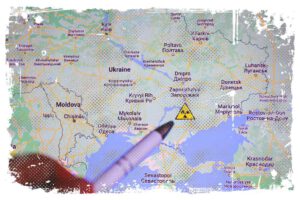Combat aviation has always been the highlight of the Air Force. Even though the arrival of Polish F-35As is delayed, the decision to purchase additional combat aircraft was made due to the war in Ukraine. In September 2022, our government placed an order for 48 units of Korean FA-50 Fighting Eagle light multi-role aircraft. This brings the total number of planned combat aircraft after the withdrawal of post-Soviet designs to 128 (48 F-16C/D and 32 F-35A).

You may not be aware, but the Polish Air Force are being busy in 2023, with increased aircraft traffic at Polish air bases and air traffic controllers. Due to the war in Ukraine, dozens of allied combat aircraft were sent to Poland to strengthen the protection of NATO’s eastern flank. Additionally, NATO aerial refueling and reconnaissance aircraft have been frequently seen over Poland, often surveying areas hundreds of kilometers to the east with their sensors.
Aircraft of the Polish Armed Forces
The Polish Armed Forces also have a variety of aircraft at their disposal, including:
- 18 Su-22 fighter-bomber aircraft
- 5 C-130 Hercules tactical transport aircraft
- 16 medium transport aircraft C-295 CASA
- 16 Leonardo M-346 Bielik training and training aircraft
- 24 Mi-24 attack helicopters
The Complete List of Polish Air Force Aircraft
F-16

The F-16 is a beloved aircraft of the Polish Armed Forces, known for its exceptional combat capabilities and tried-and-true design. Its popularity is also due to the lack of major incidents during its operation with the Polish Air Force. Although opinions on the F-16 may vary, it is undeniable that its presence in the Polish army has brought a new level of quality to the Polish Air Force. It was the first modern multi-role aircraft fully compliant with NATO standards. The F-16s are based at two locations in Poland, Krzesiny in Poznań and Łask near Łódź.
↳ PRO TIP: Do you like traveling? Then before you buy any ticket or book an attraction, check if it's available in this worldwide Viator Database. You may save a lot of money and time. No need to thank me :)
MiG-29

The MiG-29 is a 1970s design that has undergone multiple modernizations throughout its 40 years of service worldwide. Poland has been using these aircraft since 1989, when the Mikoyan and Gurievich factories delivered the first batch to the Air Force. While they may not have the same equipment and combat capabilities as the Polish F-16s, such as inferior radar and outdated electronics, many experts highlight their exceptional aerodynamic and piloting qualities, which are crucial in close engagements with enemy aircraft.
The Polish MiG-29s are based at the 22nd and 23rd Tactical Air Force Bases, and their engines can be heard by residents of Malbork and Minsk Mazowiecki where their bases are located respectively.
SU-22

The Su-22 aircraft have been a part of the Polish Armed Forces since the early 1970s, when its design was considered cutting-edge. The machine is classified as a „fighter-bomber” aircraft, which was suitable for the Warsaw Pact’s desired utility. At its peak, 110 aircraft of this type protected the Polish skies. However, these planes are now in the process of being phased out of service, as they are reaching their „thirties” and can’t compete with modern multi-role aircraft.
Due to lack of funds and a suitable replacement, around 30 of these planes (Su-22M4) are still being kept in flying condition. The gap created by their withdrawal was planned to be filled with the purchase of several F-16 aircraft, but with growing interest in unmanned aircraft, it’s possible that the replacement for them will be in the form of armed drones rather than manned aircraft.
TS-11 Iskra

The TS-11 Iskra is an old aircraft design, with the first units being delivered as early as 1963, over 50 years ago. However, it’s a source of pride for Polish technical engineering from the 1960s. I am sure you don’t know it, but the „Iskra” was designed and built in Poland, and it was the first Polish aircraft powered by a jet engine. It’s mainly used for training purposes by the Air Force Officers School in Deblin.
It’s in Deblin where, after training on PZL-130 Orlik aircraft, future pilots of F-16 and MiG-29 aircraft become proficient in jet piloting techniques on the „Iskra”. The TS-11 Iskra, despite subsequent modernizations, is an old aircraft that, like the Su-22, will soon need to be replaced.
C-130 Hercules

The C-130 Hercules is one of the most widely used transport aircraft in the world. Despite its nearly 60-year-old design, it has proven to be reliable in all conditions, having carried millions of tons of cargo. Poland has been using these aircraft since 2009, thanks to a donation of five from the US Air Force.
The Polish C-130s are an older version of the C-130E (I am not sure about this, but as I was researching the topic, I noted one source saying they date back to the Vietnam War).
They are based at the 33rd Transport Aviation Base in Powidz and their primary mission is to transport soldiers and cargo while also participating in humanitarian operations outside of Poland on occasion.
CASA C-295

The CASA C-295 is a medium transport aircraft that can carry more than 9 tons of cargo or 71 soldiers over distances of up to 5,000 km. In addition to carrying cargo and soldiers, they are sometimes adapted to transport VIPs.
Polish CASAs are stationed at the 8th Transport Aviation Base in Balice, near Krakow. Poland has the largest fleet of CASA C-295 aircraft, with 16 in total. Unfortunately, one plane crashed in 2008 near Mirosławiec due to pilot error, resulting in the loss of 20 high-ranking Polish air force commanders.
M28 Bryza

Another plane is the PZL M28, It is a model produced in Poland under license from the Soviet Antonov An-28. It is not an original design by Polish engineers but only a rebuilt version produced in our country.
The M28 aircraft is a lightweight design for passenger-transport purposes, known in Poland mainly as the M28 Bryza used by the Polish Navy (mainly for reconnaissance, rescue, and transport purposes) and the M28 Skytruck version, whose purpose is transport tasks.
Depending on the PZL-M28, it can carry about 2 tons of cargo or 19 passengers for a distance of 1,500 km. Poland is a user of 17 aircraft of this type stationed at the 8th Transport Aviation Base in Krakow, 33rd Transport Aviation Base in Powidz.
PZL-130 Orlik

The PZL-130 Orlik is the Polish Air Force’s training aircraft. It’s a jet aircraft used to train future combat and transport aircraft pilots. „Orlik” like „iskra” is a design developed and manufactured in Poland. The latest versions of „Orlik” designated as „PZL-130TC II Garmin” are on par with Western turboprop-powered training aircraft in terms of quality.
Their relatively modern equipment and very good steering capabilities allow for effective training on this jet aircraft. Despite the cessation of production of the „Orlik” in 2002, only 50 aircraft of this type were produced in 10 years, but from time to time, there is interest from other countries in buying new versions of the TCII and TCIII. Polish „Orlik” are stationed at the 42nd Training Air Base in Radom.
Plans For The Future
There is a small share of modern machines and a large amount of post-Soviet equipment with limited capabilities. However, a significant development is the purchase of 32 units of the F-35 Lightning II, one of the best multi-role fighters in the world, for $4.6 billion. This fifth-generation aircraft will be a significant reinforcement for the army. Additionally, the purchase of a new multi-role helicopter for Poland is urgently needed.
By the way – I am sure you may also be interested in reading my other article I wrote about mystery of two abandoned planes in Poland. Take a look at this, as it’s quite interesting.
How Many Planes Does Poland Have?
Poland has a total of about 269 aircraft including fighter, transport, training and training machines, and helicopters. This number includes drones such as the Turkish Bayraktar drones which have caused significant losses among Russian troops in Ukraine.
Which Polish Fighter Jet Is the Best?
The largest strike force in the Polish Air Force is 48 F-16C/D versions. These aircraft were purchased from an American manufacturer after a lengthy bidding process. Initially, a much larger number of fighter planes were to be contracted, but in the end, only $3.5 billion was raised for the development of Polish aviation. The F-16 beat the Swedish SAAB JAS 39 Gripen and the French Dassault Mirage 2000 aircraft in the competition.
The US-made machine is a classic fourth-generation fighter that can be upgraded to the standards achieved by the latest versions. Although the F-16 has been part of the Polish Air Force equipment since 2006, it remains the most valuable combat machine.
I am sure you will find interesting that the aircraft, which has been in production continuously since 1976, has seen almost 500 copies, making it one of the most popular designs in history. In the second decade of the 21st century, there were several ideas to purchase dozens more of this aircraft in new or used form (from the US or Portugal).
How Many MIG-29 Are There in Poland?
Poland has 29 MIG-29 aircraft. These post-Soviet designs were introduced into the stock of the Polish Air Force between 1989 and 2002. Some of them are new aircraft purchased from the Soviet Union, others were acquired from the Czech Republic and Germany.
From the beginning of this machine’s operation in the Polish Armed Forces, the problem included the limited availability of spare parts, which was difficult to buy from Russia.
Can you imagine, that some units here in Poland were sacrificed for dismantling and using their parts to fix another jet?
For years, the MIG-29 fighter plane was regarded among Polish pilots as a safe machine, although it is becoming increasingly obsolete. The deletion of four units from the inventory accelerated the decision to purchase their successors. It is worth mentioning that these aircraft have already been projected several times for replacement by more modern machines. However, due to a lack of funds, ad hoc upgrades were made to them in order to increase their combat capability.
Bibliography
- https://www.komputerswiat.pl/artykuly/redakcyjne/przeglad-samolotow-sil-powietrznych-rzeczpospolitej-8-maszyn-ktore-bronia-naszego/j2s9qtp#slajd-1
- https://wiadomosci.gazeta.pl/wiadomosci/7,168571,28196285,ile-samolotow-ma-polska-mozliwosci-bojowe-polskiego-lotnictwa.html
- https://www.gov.pl/web/obrona-narodowa/F-35-program-harpia
- https://defence24.pl/sily-zbrojne/cos-sie-zaczyna-cos-sie-konczy-polskie-sily-powietrzne-w-2022-roku-raport




